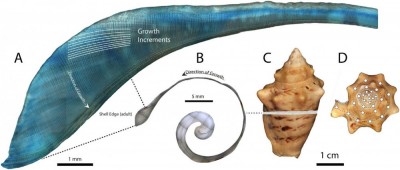New Publications By Hausmann and Winder

Two new publications are now available: in Quaternary International by Niklas Hausmann et al.: and in Journal of Human Evolution by Isabelle Winder et al.
For summaries see below, and for full publication details and links see the Publications section of the Outputs menu
Hausmann, N., Colonese, A.C., de Almeida Rocha Ponzoni, R., Hancock, Y., Meredith-Williams, M., Leng, M., Bailey, G. In press. Isotopic and elemental composition of Conomurex fasciatus shells as an environmental proxy for the Red Sea. Quaternary International. http://dx.doi.org/10.1016/j.quaint.2015.08.051 DISPERSE contribution no. 27.
This paper presents some of the first results of Niklas Hausmann's PhD research on the stable oxygen-isotope analysis of the dominant shell species present in the Farasan shell mounds. The analysis incorporates study of the growth characteristics of modern shells, raman spectroscopy of their mineralogical composition, and time-series measurements of oxygen isotope composition, temperature and salinity of the modern sea water. The results demonstrate that Conomurex fasciatus grows rapidly and that the archaeological specimens preserve a sensitive record of seasonal and secular changes in palaeoclimatic signals. This research lays the groundwork for the use of the shells from the Farasan shell mounds as good indicators of palaeoclimatic trends and seasonality patterns of prehistoric shellgathering.
Winder, I.C., Devès, M.H., King, G.C.P., Bailey, G.N., Inglis, R.H., Meredith-Williams, M. 2015. Dynamic landscapes and complex topography as agents in human evolution: the dispersals of the genus Homo. Journal of Human Evolution 87: 48–65. http://dx.doi.org/10.1016/j.jhevol.2015.07.002 . DISPERSE contribution no. 24.
This paper develops the ideas and mapping methods that inform the complex topography hypothesis to examine geographical patterns in the early evolution and dispersal of the genus Homo, with particular emphasis on the effects of complex topography as a constraint on the major pathways of early dispersal. The paper compares these topographic constraints with other environmental variables and physical barriers to dispersal, and suggests that the impact of topography helps to explain why members of this taxon show considerable flexibility in their tolerance for different vegetation types, habitats and climates, but also why their pattern of dispersal appears to be constrained to clearly delineated and non-random zones across continents.






